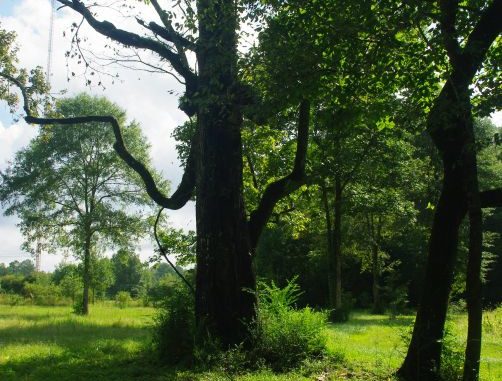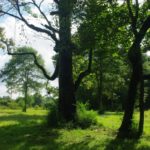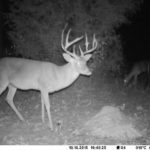
Their crowns bring much glory to our Louisiana landscape
Records are kept these days of just about everything. As we saw during the 2016 Summer Olympics the old adage “records are made to be broken” is still true.
Even Mother Nature breaks records, and unfortunately her records result in much damage, pain and suffering. Our hearts go out to all those who have been impacted by the record August flooding, but as we have always seen and experienced, residents of the Bayou State are a strong group and the pains of this new record will soon become a moment in history.
It is unfortunate that so many of our fellow hunters live in the area impacted by the flood and might not enjoy much of the 2016 season. Now is the time to reach out to our neighbors and help in any way possible.
In Louisiana, records also are kept of trophy deer, turkeys, fish and champion trees. LDWF and the Louisiana Outdoor Writers Association work together to keep the records of the fish and wildlife species, while the Louisiana Forestry Association keeps records of champion trees.
Brian Chandler, LSU AgCenter Extension Forester, keeps the Louisiana Champion Tree Directory. The list of champion trees for 2016 was just published in the first quarter issue of “Forests & People.”
The scoring system for documenting a big tree is based on the height, circumference and crown spread. Points are assigned for each of the measurements. While most people are familiar with the circumference measurement for a tree (the measurement around the outside of the tree at breast height), the height and crown measurements might be unfamiliar to them. I would suggest anyone finding a big tree that has potential for being a new record should take the circumference measurement and check the directory to see how it compares with the state record.
If it is within 12 inches of the record, it would be worthwhile to take the other measurements and plug it into the points system to see where it ranks. A forester would be able to help with the crown and height measurements.
The form which is used to document the measurements is available at www.laforestry.com.
I have had the joy of finding a couple of record trees over the years, but since records are made to be broken, these have been replaced with larger trees.
The champion sweetgum has a circumference of 12 feet, 2 inches. On our small property in Clinton, we have a sweetgum that has a circumference of 12 feet, 5 inches. Unfortunately our large tree is dying at the top and will not be around much longer; I doubt that the crown measurement would be larger than the record tree.
It is still a beauty of nature and a sight worth seeing.
Many years ago, our country lost a great wildlife tree when chestnut blight came in and wiped these trees out.
Today, states are dealing with the emerald ash borer, a wood-boring beetle that is destroying ash trees in this country — including in Louisiana. It could be that our various species of ash could be gone in our lifetime.
Ash, of course, is an important tree to the baseball bat makers. While trees die from natural mortality all the time, it is certainly a shame that another invasive species is causing havoc in our forests.
Several years ago I predicted that the Louisiana record for bucks with typical antlers would be broken. To date this has not happened, and now I am beginning to think that this record might not be broken.
While the age of bucks in our population is getting older and most hunters today look for magazine cover bucks to shoot, the odds of bagging a new state record are not good.
To begin with, we have seen many changes in the Louisiana landscape that have changed the ability of the habitat to grow big deer. Nutrition is key for growing big bucks, and the fact is that much of today’s habitat is lacking high-quality nutrition.
Certainly the delta regions of the state, where crops are being grown annually, has nutrition for growing big bucks, but these areas have not produced new state records.
Boone and Crockett bucks that score in the 180s in the typical category appear to be quite rare. Every year, we have a handful that will score in the 160s, and few might net in the 170s, but 180 typicals are not common at all.
As bucks get older, they get much wiser, and these trophies that were on camera in the preseason seem to vanish on the landscape.
And as hunters get older, their hunting habitats get soft and the true effort it takes to find these bucks and hunt them where they hide is lacking.
This is why I say it will not happen — now having said that, someone go out and prove me wrong this season.




